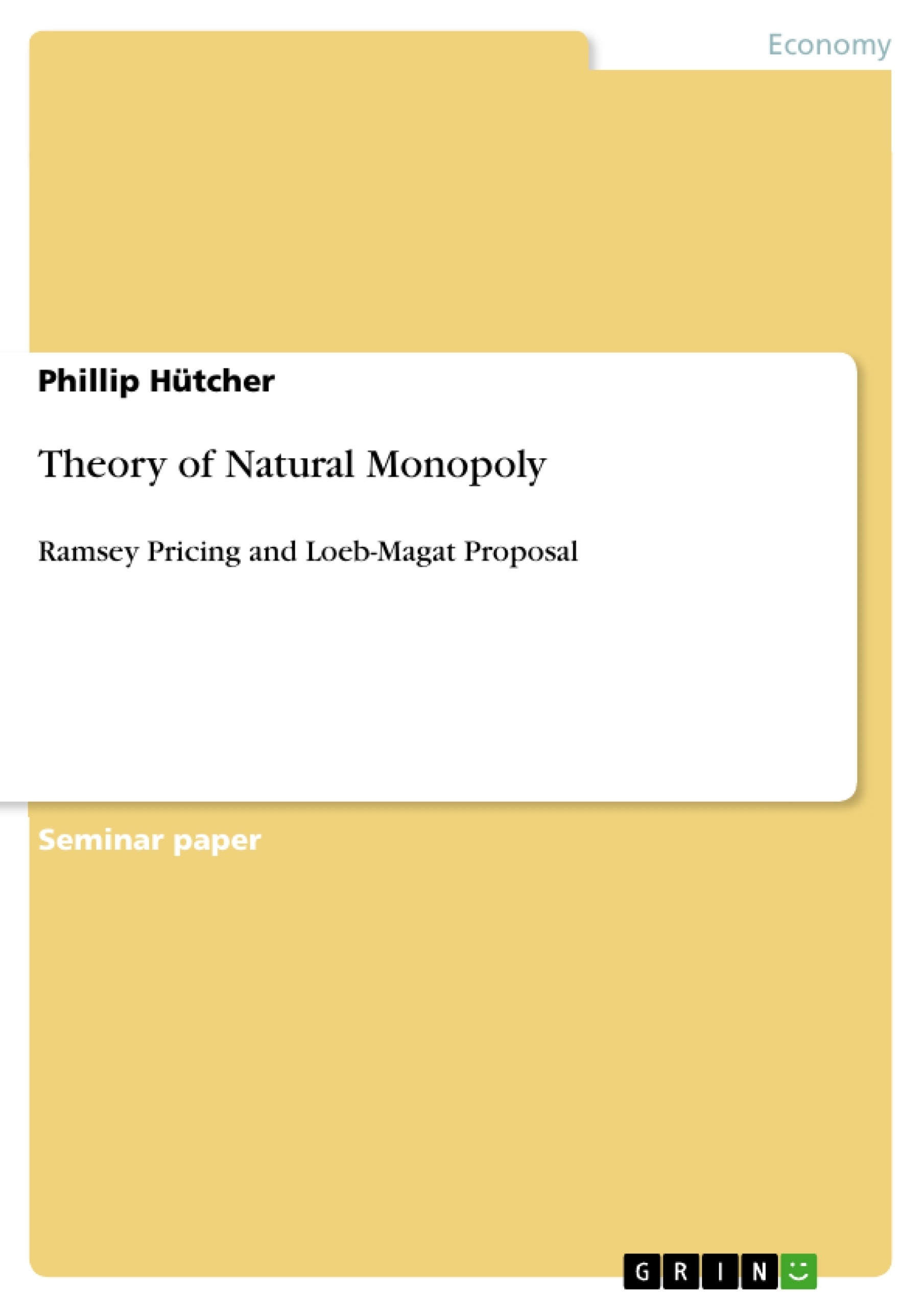Diese Hausarbeit erklärt die Preisstruktur nach Frank Ramsey, welche das Ziel hat die optimalen Preise (die vom Regulierer zu setzen sind) für ein Multi-Produkt-Monopol zu kalkulieren. Optimal bezieht sich hierbei auf den größtmöglichen Wohlfahrtsgewinn. Dazu werden Graphiken, ein Zahlenbeispiel und schlussendlich eine Vergleichstabelle herangezogen um die nicht ganz einfache Thematik zu veranschaulichen. Weiterhin wird das Konzept nach Loeb und Magat erklärt; hierbei soll trotz Preisbestimmung durch den Monopolisten eine Maximierung der Wohlfahrt erreicht werden.
Table of Contents
- Introduction: Ideal Solutions for Natural Monopolies.
- Ramsey Pricing: How to Maximize Social Surplus
- Numerical Example and Theory of Ramsey Pricing.
- Ramsey Rule in Practice: Regulation of the Long Distance and Local Telephone Service ...
- Regulation without Perfect Information: The Loeb-Magat-Proposal...
- Conclusion..........\n
- Bibliography.
Objectives and Key Themes
This paper explores the theory of natural monopoly and the challenges of pricing and regulation in such situations. It focuses on finding optimal price structures for multi-product firms to ensure social welfare maximization while covering costs and minimizing deadweight losses.
- Ideal solutions for natural monopolies and the limitations of marginal cost pricing.
- Ramsey pricing as a second-best solution to maximize social surplus in natural monopolies.
- The application of Ramsey pricing principles to real-world examples like telephone service regulation.
- The Loeb-Magat proposal as a solution for regulating monopolies with imperfect information.
- The role of deadweight loss and its reduction in achieving optimal pricing strategies.
Chapter Summaries
- Introduction: Ideal Solutions for Natural Monopolies: This chapter introduces the concept of natural monopolies and discusses the challenges of setting prices in a single-product situation. It explains why marginal cost pricing, while ideal for maximizing social welfare, may not be feasible due to high fixed costs and the need to cover total costs.
- Ramsey Pricing: How to Maximize Social Surplus: This section introduces the concept of Ramsey pricing, a second-best solution for maximizing social surplus in a multi-product setting. It explains the importance of finding a price structure that balances social welfare with the firm's need to cover costs.
- Numerical Example and Theory of Ramsey Pricing: This chapter provides a numerical example of Ramsey pricing in a two-good market. It demonstrates how to calculate the optimal price ratio for maximizing social surplus while ensuring the firm's profitability.
Keywords
Natural monopoly, Ramsey pricing, social surplus, marginal cost pricing, deadweight loss, regulation, multi-product firm, telephone service, Loeb-Magat proposal.
- Quote paper
- Phillip Hütcher (Author), 2011, Theory of Natural Monopoly , Munich, GRIN Verlag, https://www.grin.com/document/175356




